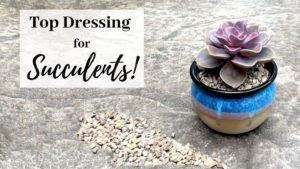Can you believe summer is just around the corner?
We often think of summer as a time of ease and relaxation, but this is not the case for our garden. In truth, summer is a challenging time for many plants and animals, and succulents are no exception. While some respond to summer with glorious blooms, like the Aloes above, many suffer from the brutal heat. Unlike animals, our plants cannot go and flop in the shade of a tree and pant when they get too hot. They have to stand and take it.
But succulents are amazing plants that have developed a number of intriguing adaptations to enable them to survive the hot, drying days of summer. Some of these adaptations are concerning to gardeners and some are downright confusing. Let’s take a closer look at 9 different succulent adaptations for dealing with summer.
Summer Poses Challenges for Succulents
In this Post We'll Cover:
- Summer Poses Challenges for Succulents
- Succulents in Summer
- How Summer Can Kill Succulents
- 9 Adaptations that Protect Succulents in Summer
- Succulents Fold Their Leaves
- Some Succulents Make Their Own Shade
- Some Succulents Grow Underground
- Succulent Sunscreen
- Brightly Colored Pigments Protect Succulents from Sun Damage
- Some Succulents go Dormant in Summer
- Some Succulents Drop Their Leaves
- Succulents and CAM Photosynthesis
- Strategic Succulent Wilt
{Please note, some links in this post may be affiliate links to sites that pay me a small commission if you click on the link and make a purchase. This commission is at absolutely no cost to you. I only recommend products and companies that I have worked with and truly love! ~Kat}
Succulents in Summer
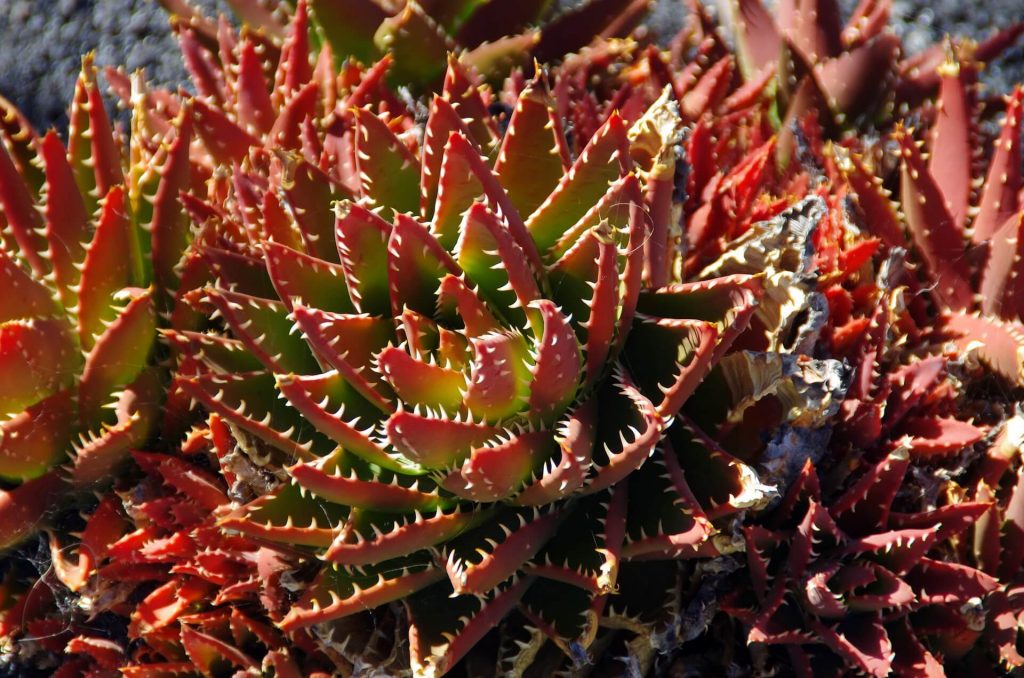
What makes summer so hot?
The Earth is not closer to the sun in summer. In fact, due to the tilt of the planet on its axis, the hemisphere experiencing summer is actually further away from the sun in summer than in winter.
Summer is the time of year when the sun’s rays fall most directly upon the Earth, rather than coming in at a glancing angle. Consequently, everything in full sunshine absorbs more of the sun’s energy during summer than at any other time of the year. This is what makes summer so hot, and sunburn for both people and plants a bigger issue in summer than in any other season. Further, the hot, dry air of summer can cause plants and animals to lose water and dehydrate more rapidly, just when they need the water most to help regulate their internal temperature.
How Summer Can Kill Succulents
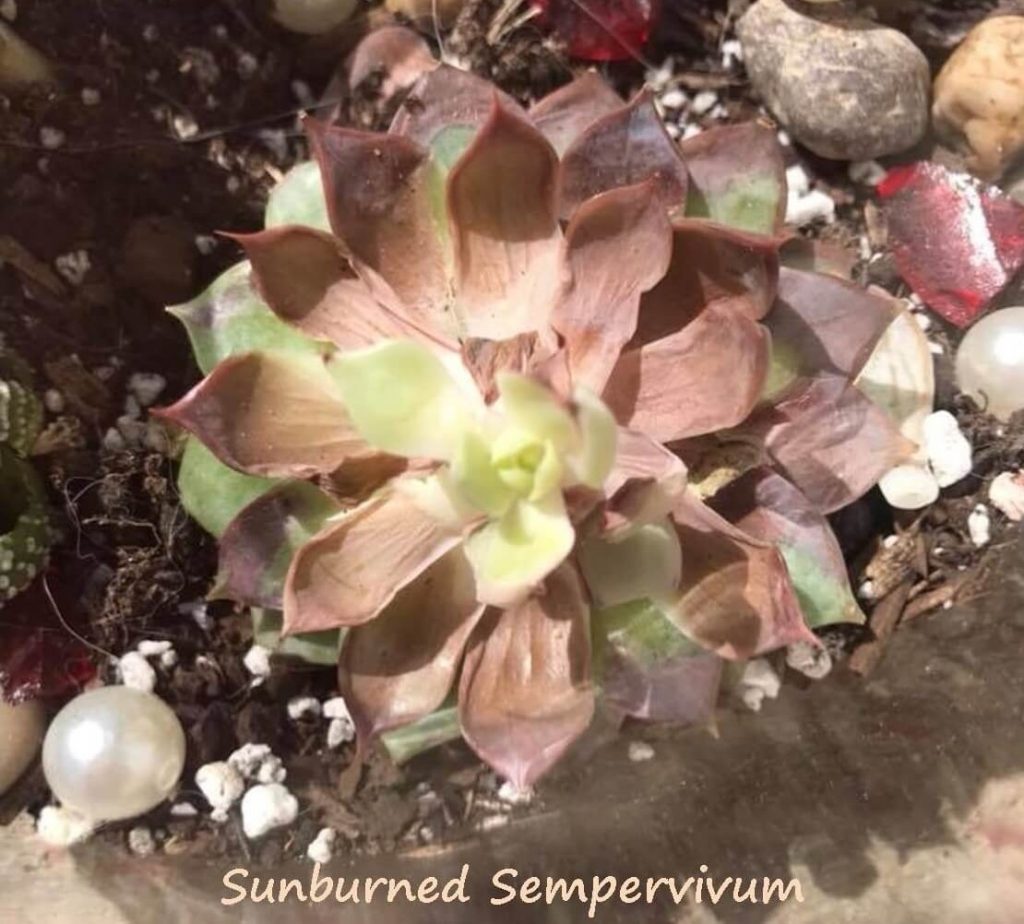
The searing heat and increased intensity of sunlight can lead to succulent sunburn. The skin of the leaf that protects the stores of moisture becomes scorched and burned. The chlorophyll in the damaged cells breaks down and the leaf turns brown and brittle Damage like this can happen in a single, hot day. This damage is permanent to the leaf. Beyond unsightly scarring, this sunburn-damaged leaf tissue cannot transport water through the cells, it cannot respireTo respire - Respiration is the process where living beings,... More and it is incapable of photosynthesisPhotosynthesis (FO-to-SIN-thuh-sis) is the process plants us... More. This burned, brown tissue is dead.
Sunburn can be deadly. The damage it causes cannot support life. But have you ever noticed the way most succulents arrange their leaves in multiple layers? Some leaves shade others so that at no time are all of the plant’s leaves in full sun. If half of the plant’s leaves remain undamaged, those healthy leaves can support the plant with respirationRespiration is the process where living beings, both animals... More and photosynthesis. In time, sufficient new growth develops and the plant will outgrow the unsightly damage.
Nothing about succulents is a coincidence. The overlapping arrangement of the leaves that protects a plant from sunburn is just one adaptation that protects them in summer. Let’s take a look at more such adaptations.
9 Adaptations that Protect Succulents in Summer
Succulents Fold Their Leaves
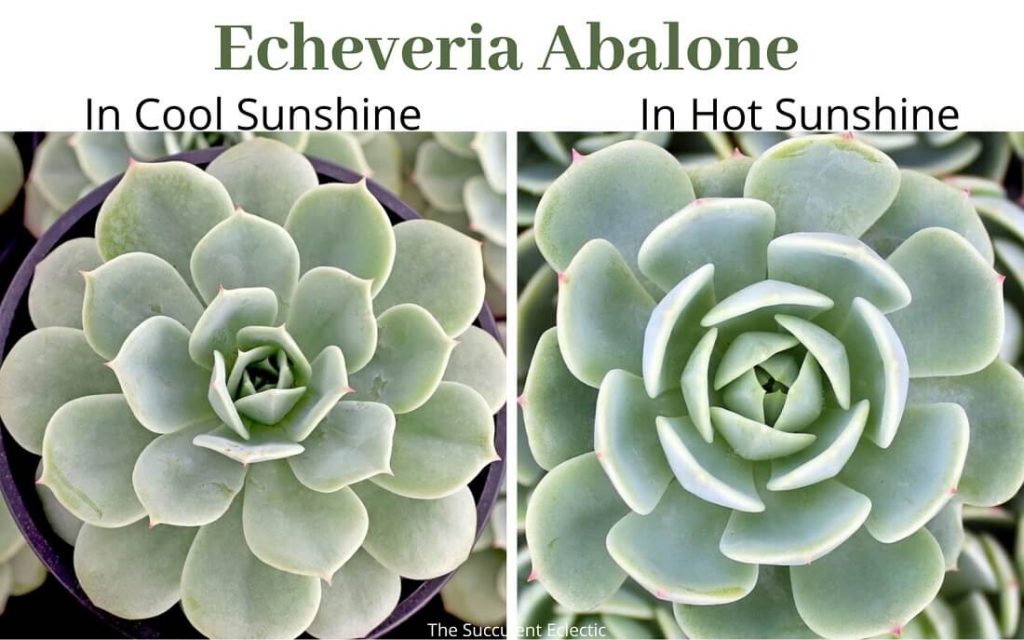
It’s not enough to have the arrangement of leaves cast a bit of shade. When summer heat soars, many succulents will tilt their leaves to more fully shade other leaves. On the left is an Echeveria ‘Abalone’ as it appears fall through spring. The leaves are wide open, maximizing the amount of each leaf’s surface exposure to the sun for photosynthesis. When summer heat soars, the rosette closes quite a bit, so each leaf minimizes its profile in the sun.
Some Succulents Make Their Own Shade
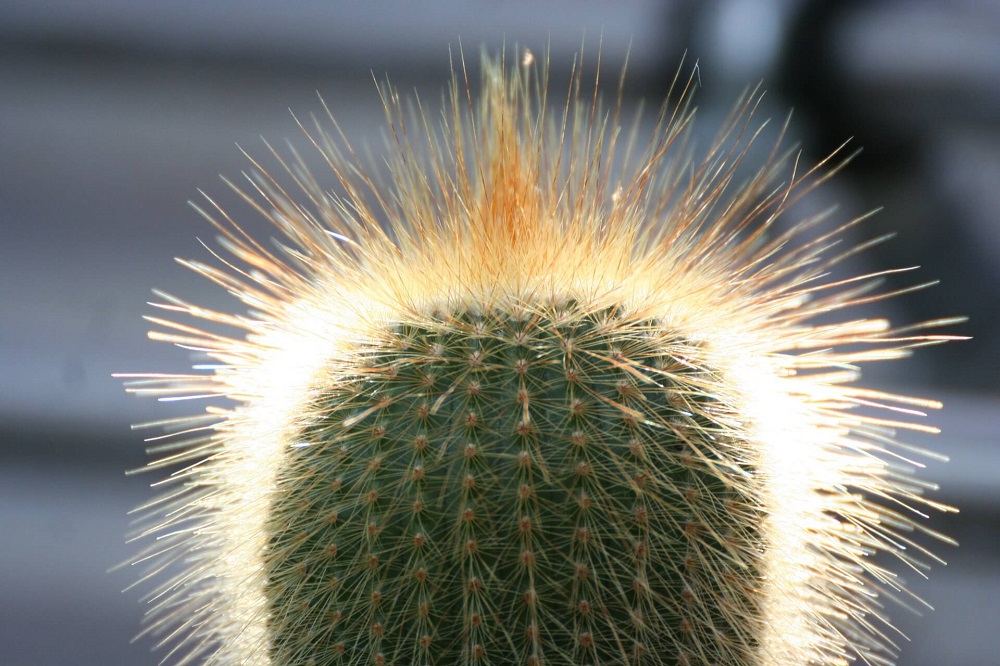
The best-known characteristic of cacti is their protective spines. Among several purposes, cactus spines shade the plant’s skin that protects the stores of water. It may not seem like a needle-slim spine creates that much shade, but combined with the shade cast by all the other spines, it’s enough to lower the temperature of the cactus’ skin significantly. These spines also provide a buffer against hot, drying wind so the plant does not lose as much water due to evaporation. Some succulents grow hair or spider-web like filaments to provide the same, protective functions.
Some Succulents Grow Underground
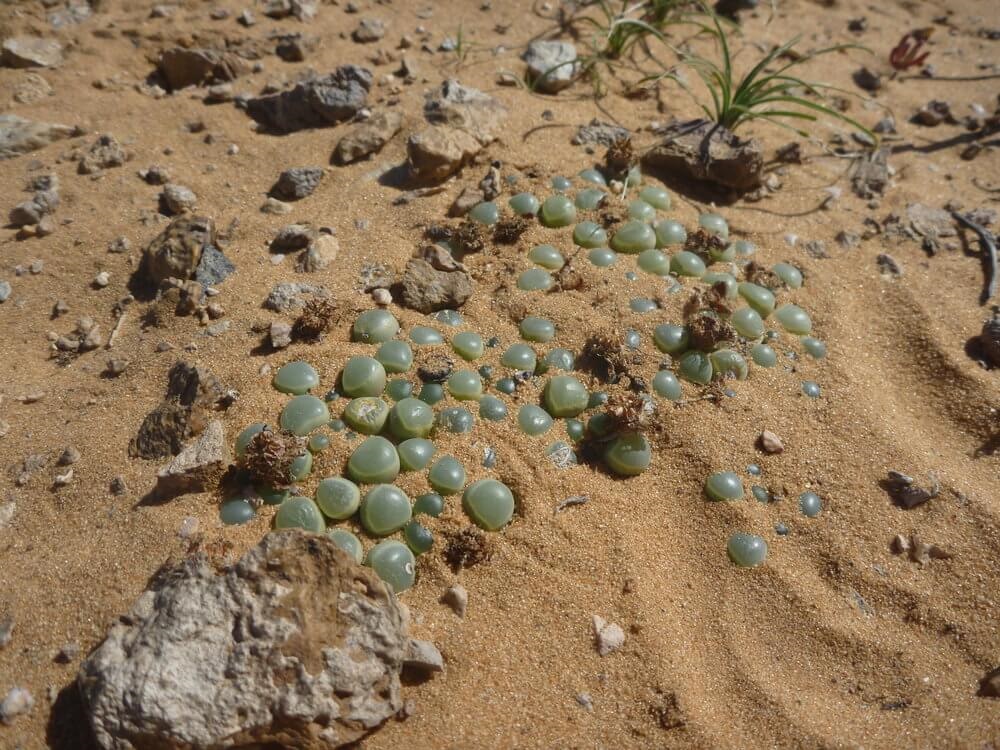
Some succulents, like this Fenestraria Baby Toes have developed special tissues called “leaf windows” that allow the plant to grow partially underground. Just the tips of the plant, with the leaf windowsLeaf windows are specialized leaf structures specific to som... More, is exposed to the sunlight. The light penetrates the “windows” and photosynthesis occurs deeper within the leaf. This protects most of the plant from the drying, burning effects of the sun’s UV rays. Lithops and some Haworthia also develop leaf windowsLeaf windows are translucent structures on the outside of ... More for this same purpose.
Succulent Sunscreen
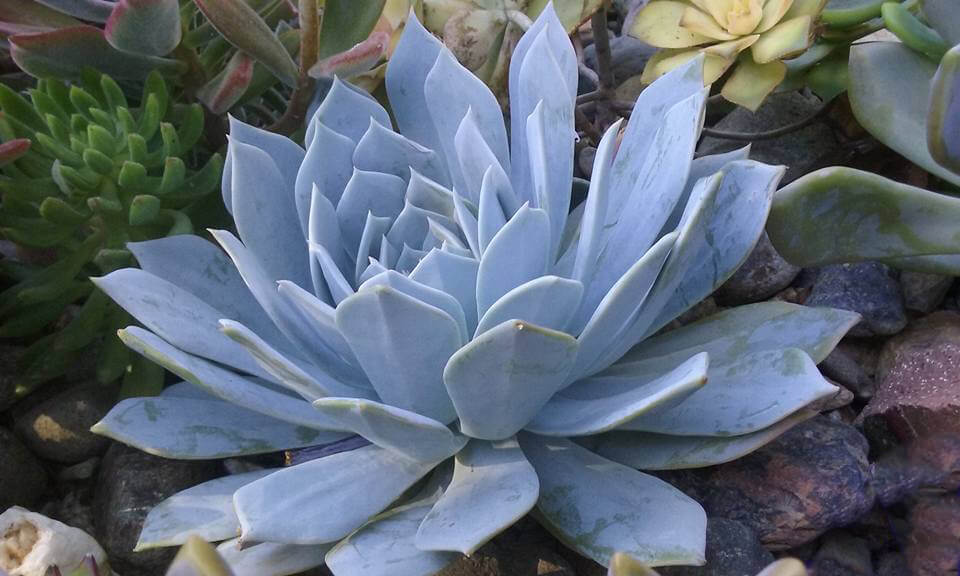
Still other succulents protect themselves from the hot summer sun with their own, built-in sun screen. Epicuticular wax is the whitish substance found on some succulent varieties. It is also referred to as farinaFarina is a term for a very fine flour. Used with succulents... More. This waxy film is easily wiped away and should not be disturbed. Use a soft-bristled brush to clean the plants, leaving the epicuticular waxEpicuticular wax (Ep-i-cyoo-TI-cyoo-lar wax) is a natural, ... intact. It acts as a sunscreen, it protects the plant against moisture loss and helps to prevent insect damage.
Brightly Colored Pigments Protect Succulents from Sun Damage
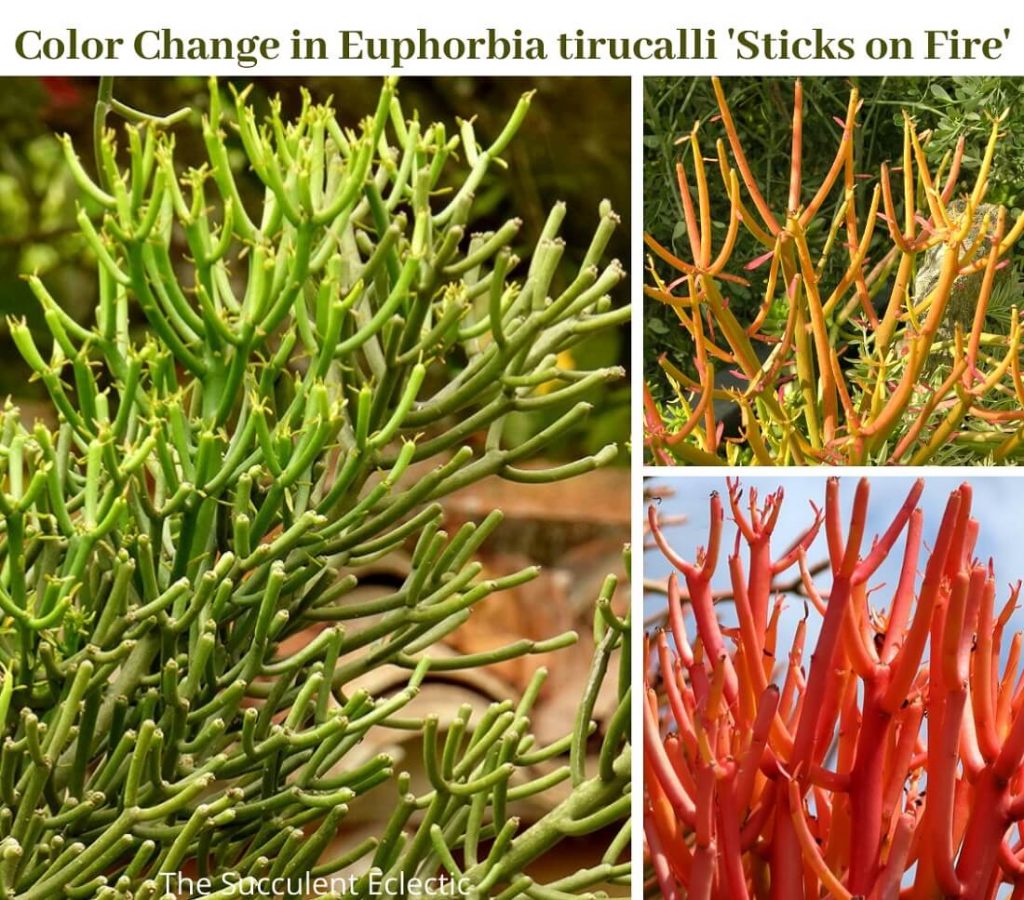
Just our skin produces melanin to protect itself from sun damage, so, too, do many succulents become more colorful. Many succulents develop intensely colored pigments that combat the damage caused by the sun’s UV rays. The stress of heat and direct sun is a frequent cause of succulents changing color. The color-buildup, and therefor the protection, develops gradually, just as ours does when we tan.
Some Succulents go Dormant in Summer
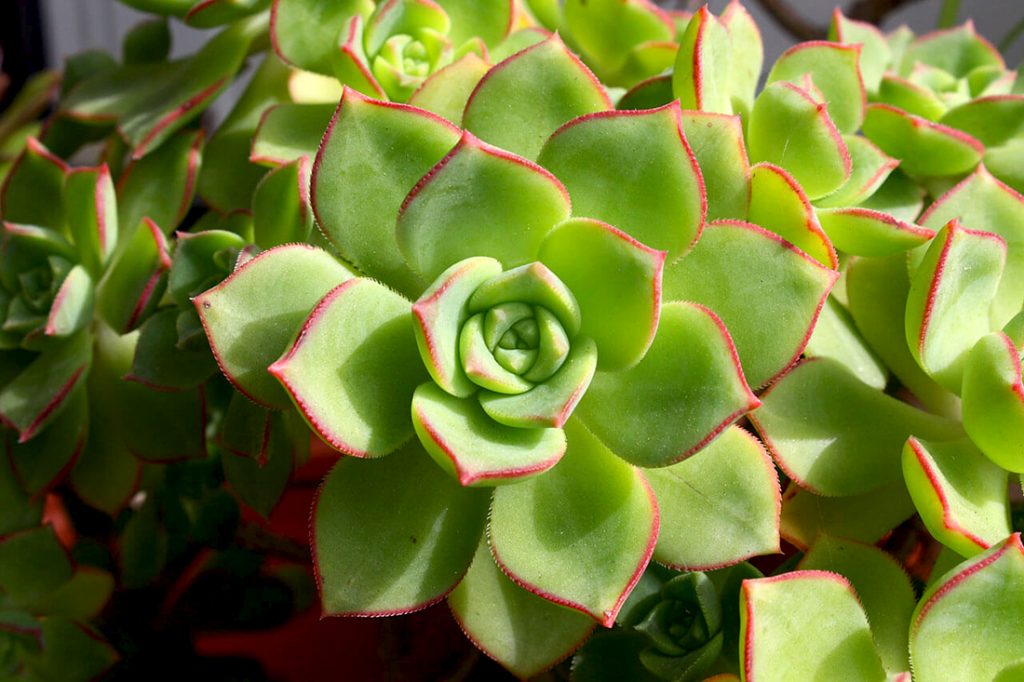
Some succulents go dormant in summer. Typically, these are varieties that are native to areas that remain dry during a hot summer. Rather than struggle to grow during brutally hot, dry conditions, these plants simply go to sleep for several months, like bears do in the winter. During dormancy, the plant’s respiration and photosynthesis slow dramatically and new growth ceases. When the cooler temps of fall return, these plants wake up and resume their active growth.
Some Succulents Drop Their Leaves
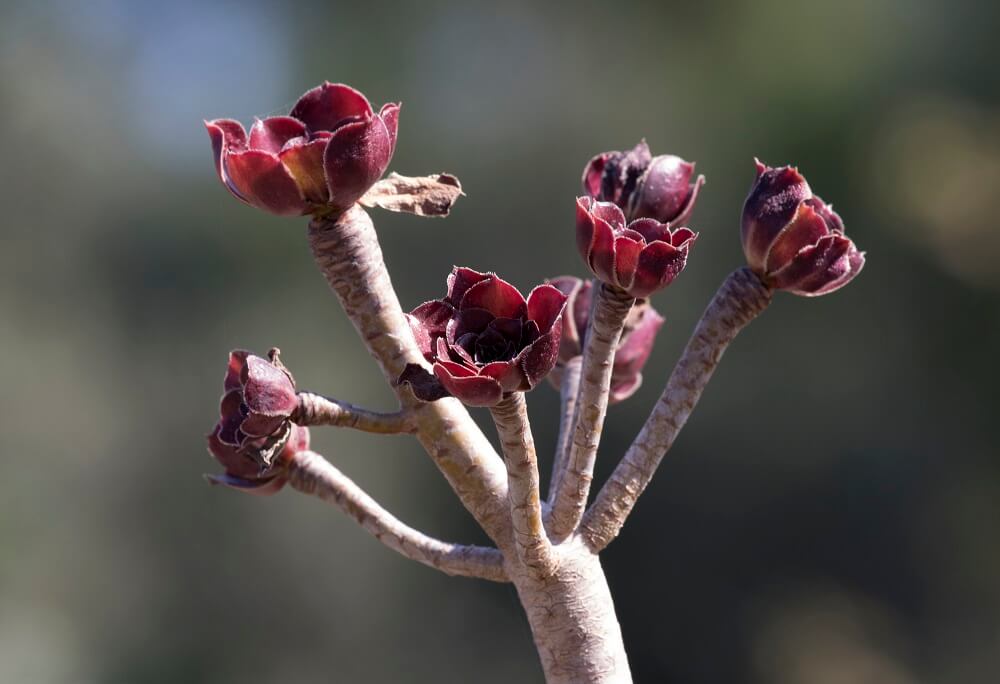
Some succulents, like this black Aeonium, drop their leaves during the hot, dry conditions of summer. Although it looks alarming to a gardener, this is a complex strategy to survive a harsh climate.
Photosynthesis and respiration are essential for plant life, and typically occurs in the leaves. All plants absorb energy from the sun to convert it into sugars, releasing oxygen (photosynthesis). Then, they combine the sugars with oxygen to create the energy to grow, releasing carbon dioxide and water (respiration). These essential functions cost the plant water. Rather than lose water through their leaves, some succulents drop their leaves in summer.
When the high heat of summer approaches, these succulents first reabsorb the precious moisture and nutrients stored in their leaves. The leaves become thin and papery and the plant drops them to conserve the stored water and nutrients. These are then stored in the roots for later use when the growing conditions are more favorable and the plant produces new foliage.
Succulents and CAM Photosynthesis
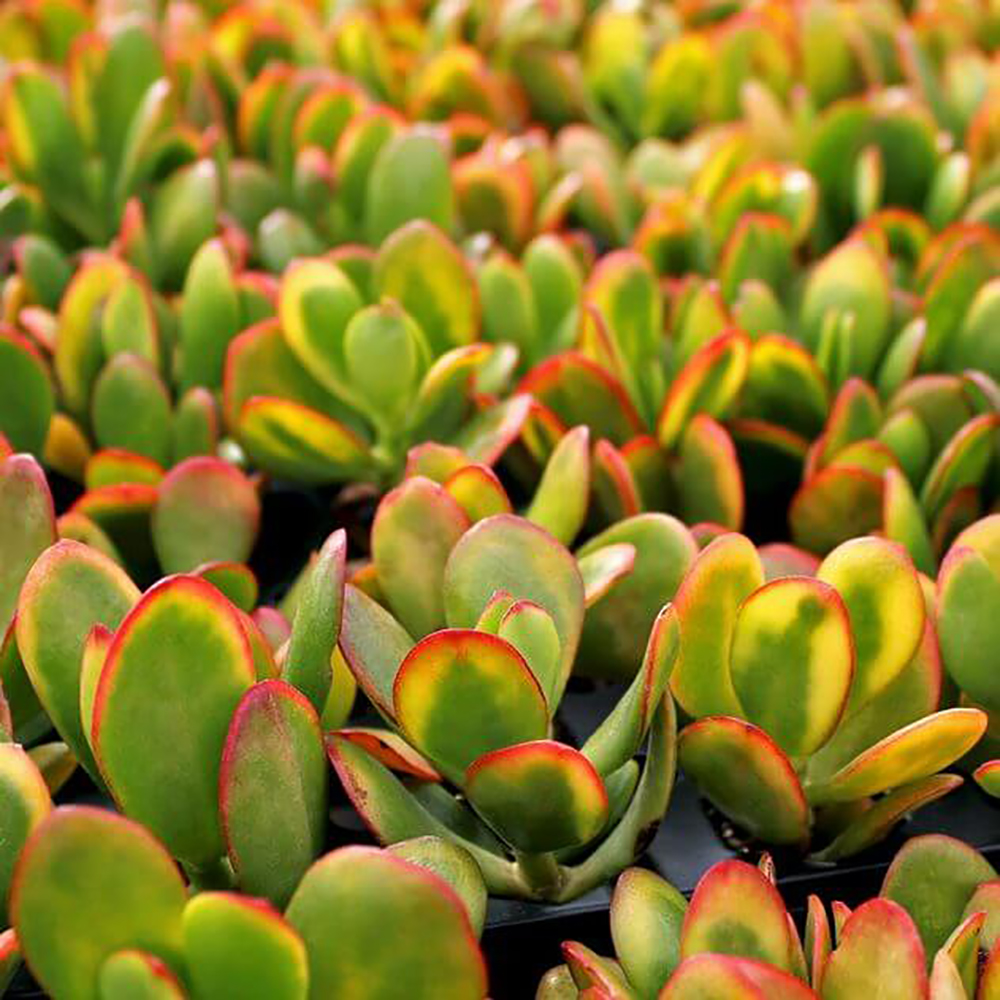
All plants photosynthesize sunlight into sugars. This can only be done when the sun shines. All plants respire, turning the sugar and oxygen into energy and releasing water and carbon dioxide into the atmosphere. Most plants respire all the time, night and day. But some succulents have devised a different approach to conserve their stores of water.
Crassulacean Acid Metabolism, or CAM photosynthesis, is a process where the plant shuts down its stomata (the cells in the leaves responsible for releasing water vapors) during the day. These plants photosynthesize during the day and respire only at night. This enables the plant to conserve more water during the heat of the day, releasing less to the cooler air of the evening.
Strategic Succulent Wilt
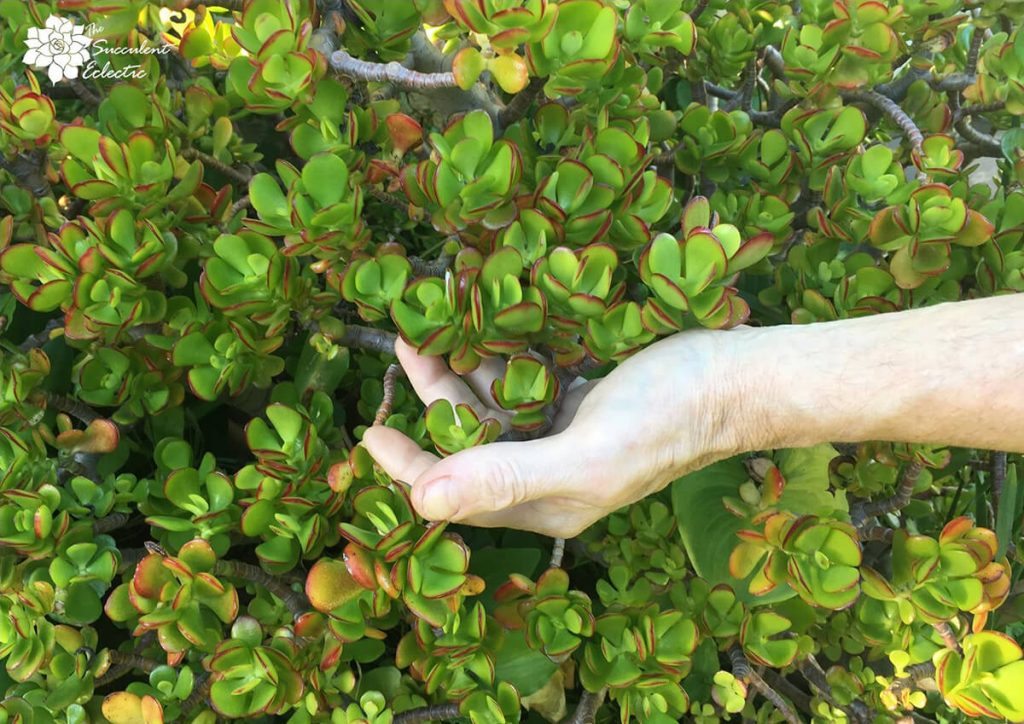
You know how some plants wilt in the heat of the day, but then perk right back up at night? This is due to the plant temporarily closing its leaf stomata to conserve water during extreme heat. Succulents do this, too. With most plants, you can see the change that happens, but with succulents, it is not so visibly obvious. You must get hands-on with your plants and feel the difference. Using your sense of touch is an important part of succulent care.
When you notice a succulent is feeling loose and floppy instead of perky and firm, it is a sign the plant has an issue. If it is a hot day and the plant snaps back to a firm feel in the cool of the evening, you’ll know it was responding to the stress of heat by clamping its stomata closed. The plant was stressed, but it implemented a strategy to handle with it.
Now that you see all the adaptations succulents have developed for surviving summer, it’s time to learn how to adjust your care during these hot months. Stay tuned! Next week, we’ll cover summer succulent care!
’til then, Happy Gardening!

P.S. For more succulent care information, please subscribe to The Succulent Eclectic! I’ll send you my FREE e-course 7 Steps to Succulent Success!
P.P.S. Why not join my Facebook Group for succulent lovers? We talk about succulent care, propagation, succulent identification, and design. It’s a warm and welcoming group that would love to meet you!
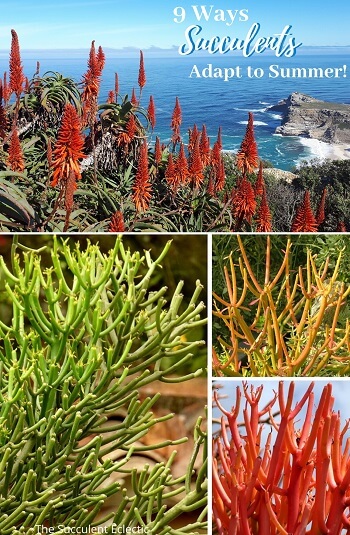


![Read more about the article Rosette Succulent Types ~ Identification & [Infographic]](https://thesucculenteclectic.com/wp-content/uploads/2020/10/Recognizing-Different-rosette-succulent-types-300x196.jpg)
